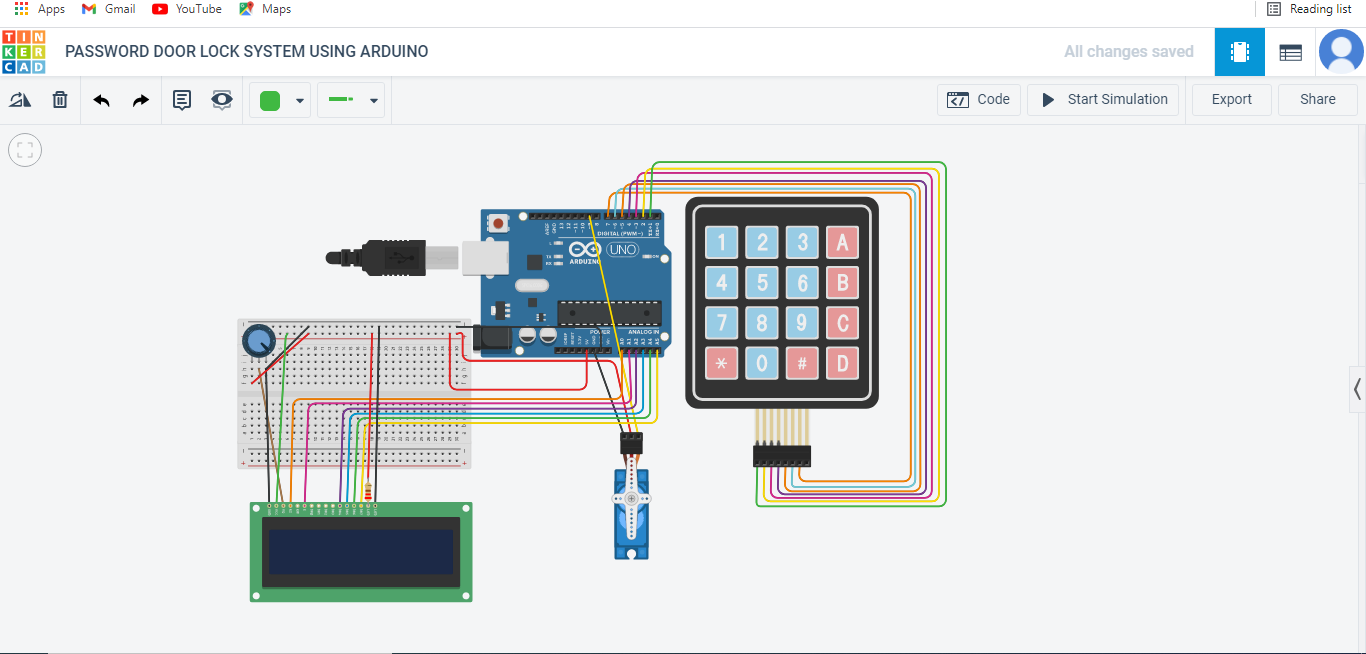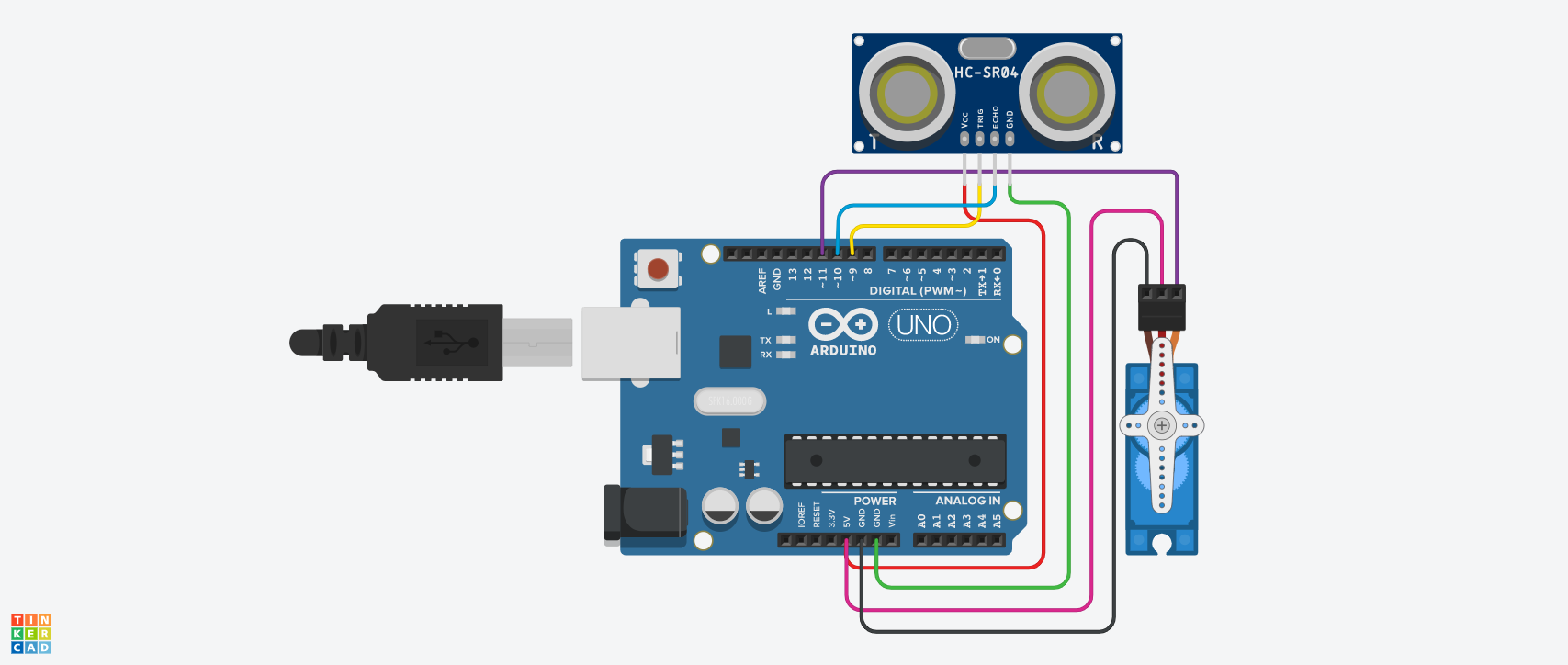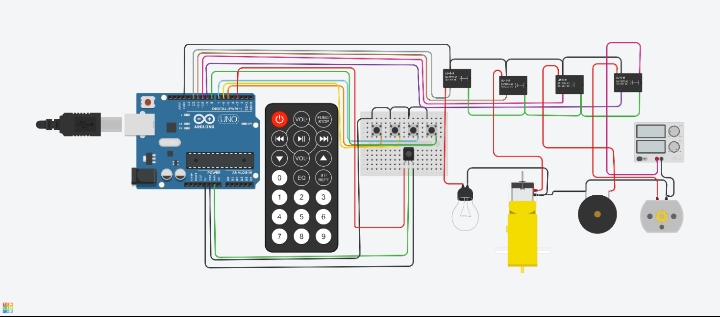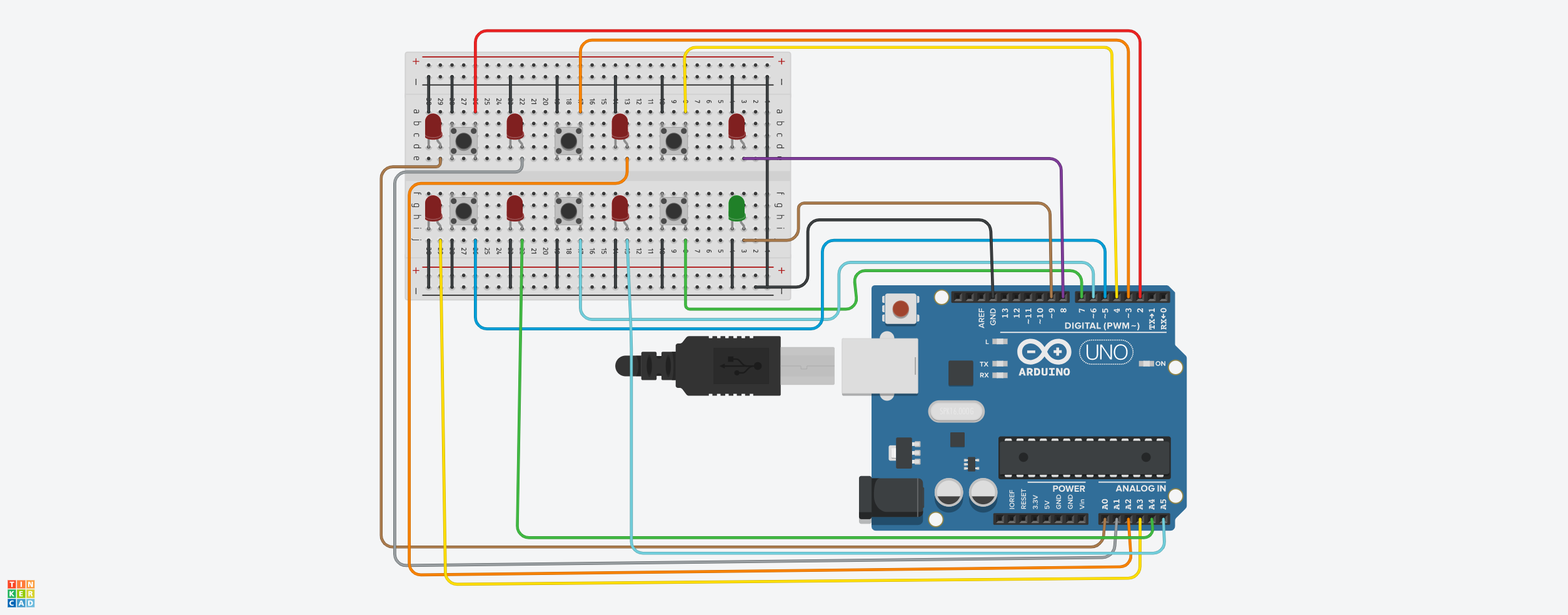Hardware: (Please Publish this video to youtube if publishing instead of the previous one, I have made some changes (removed some personal information not to be shown)...Sorry for the inconvenience. Please use the other video for putting the marks. Thank you for understanding.) Arduino Board, Wires, Servo Motors, Buzzer (Piezo), Pushbutton, Keypad 4x4 (not a storage safe project)
Abstract: S.N.A.I.L
S – Speaking and listening
N – Naturally for people
A – Abled differently
I – Inter-personal
L – Linguistics Device.
ABSTRACT
SNAIL- Empowering the deaf and the blind to communicate and interact with others.
The ability to read, write, listen and communicate is certainly one of the most important gifts given by God, but there are people around the world who are unable to do the same. These handicapped (the blind and the deaf) people suffer a lot may it be in terms of rights, comfort and in an overall ease of life. Reaching out to people, sharing their thoughts and views and enjoying the same benefits and comforts as normal people have always been a challenge. SNAIL helps these handicapped people to interact with the real world, read, listen, speak and communicate in all ways possible.
SNAIL is a hardware and software integrated project in which the software works will be carried by the user’s mobile phone.
The basic way in which SNAIL works is by converting sound and text to braille real-time and making the user feel it. When the user receives a phone call, the speech
to text converter starts its job and it gets converted to braille the same way, live. This is made possible by a software downloaded to the phone. Once the speech is converted into braille, the signal is transmitted to a device with the dimensions of an oxymeter (Size of 1/3rd the index finger), this device contains a set of 6 (3 x 2) rods. The rods get triggered and the person feels the rods touching the person’s fingers. Apart from translating phone calls, this multi-step translator can be used for hearing. Once the microphone of the mobile is switched on, automatic speech to text conversion followed by text to braille conversion starts, which then gets transmitted to the device thereby helping the person to ‘hear’.
The platform can be made to brush the person’s fingers so that the exact sensation is felt as for or when reading braille in books or printed ones. For the texts in mobile phones or laptops, upon being connected to the device, the text in the screen gets converted into braille first which then gets communicated to the user. The cost of the device will range from 500-700 rupees considering that it requires just a signal receiver, a microchip, the rod-platform. The rest will be done with the help of software’s. The person is made comfortable with the device, by providing a learning session or a permanent platform on downloading the app. A sensor is attached below the device such that it serves as a mouse. The mouse has the canvas of the whole phone to move around and select. The semi-elastic rod platform can be clicked on to give the ‘mouse click (enter)’ command. The mouse is mainly intended for braille to speech converter. When the person moves the device around the mobile’s keyboard (for touch-screens), when the imaginary cursor is on a particular text / number block, the rods in the platform or the device resembles that particular digit or alphabet. Upon clicking it, the letter gets selected. With practice and especially due to the fact that their touch sense is highly improvised, a person would be able to get hold of entering text and reading it quickly. When the app is switched on, upon entering of letters or digits by the person, if the app recognizes a valid word, it reads it loudly, so that they are able to ‘speak’. They would be able to use chatting apps and all other apps seamlessly as all the information we perceive with our ears or eyes will be converted to a language they can understand may it navigation menus, titles, ads or anything else. The users are supposed to form a general image of apps they frequently use. A general overview of apps like messaging, phone, emergency dial, WhatsApp, music player and more. The size of the platform differs in different sizes but the
general size can be considered of that of a mouse or that of an oxymeter. Further adding on the project, an optical character recognition system along with a sensor in place of the infra-red light for operating the mouse can be made such that the text that is below the device is converted to braille one word at a time along with speech if required. This helps is converting all hard-copy books to braille books. Further on, a few switches for common phrases and custom phrases can be installed such that when the person presses the buttons on the outside, the phrase gets converted to speech. The text that is entered by the person can be stimulated to speak too. This will help paralyzed people and people with other disabilities to communicate. All the features of the device and the app are available for all specific languages and not only English since the required software can be made for all.
In short, converting phone calls into braille, phone content into braille, and real-time surrounding talks to braille conversion, e-books and other text to braille, speaking through auto text-read by giving in user input letters or numbers, conversion of normal book text or newspaper text to braille, getting access to apps and communication services, for the deaf and the blind. This will help the disabled people use phones and do much more as it promises user interaction along with display output conversion through portable devices with costs of about 700 rupees.













.png)



.png)



.png)






.png)














.png)
.png)







